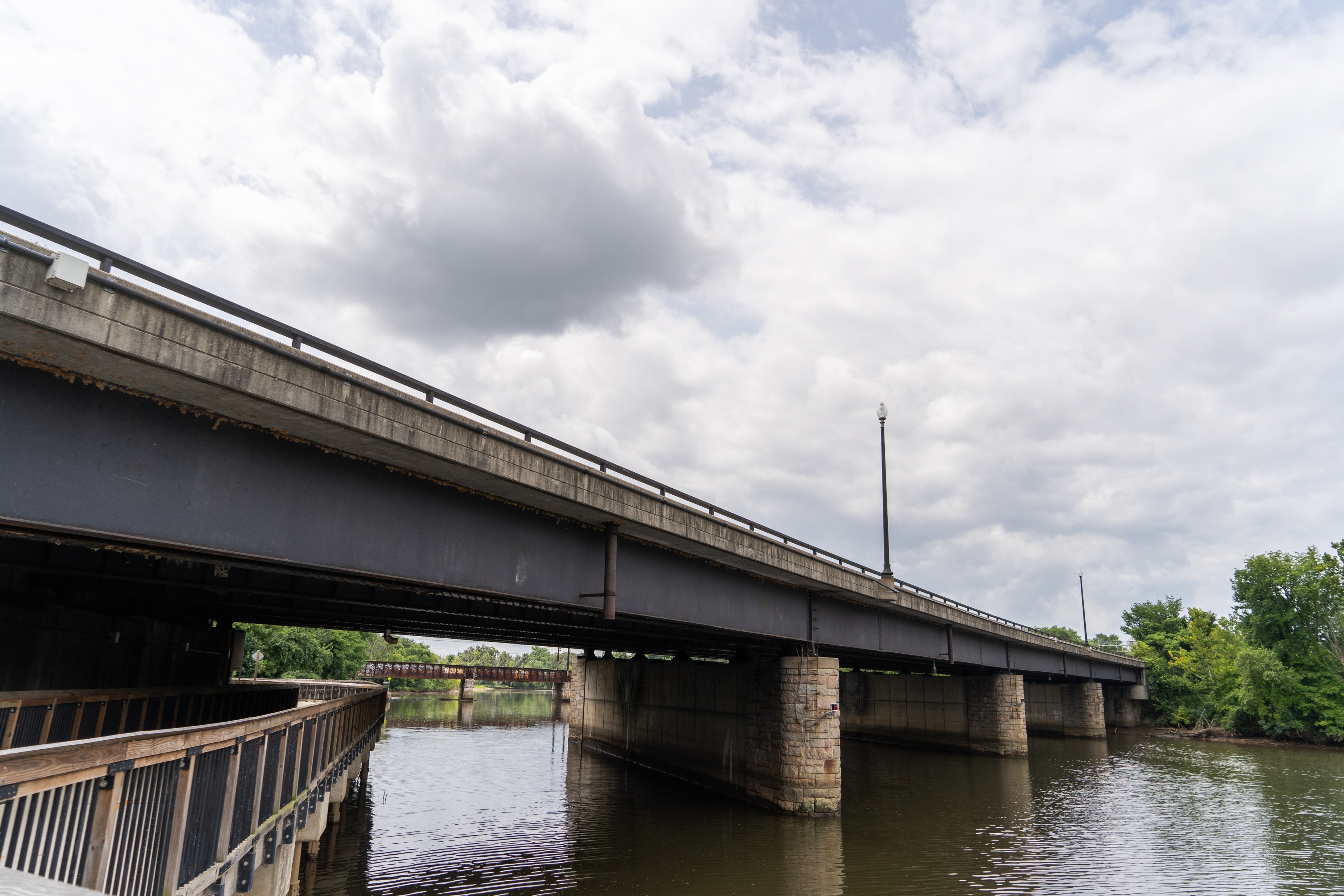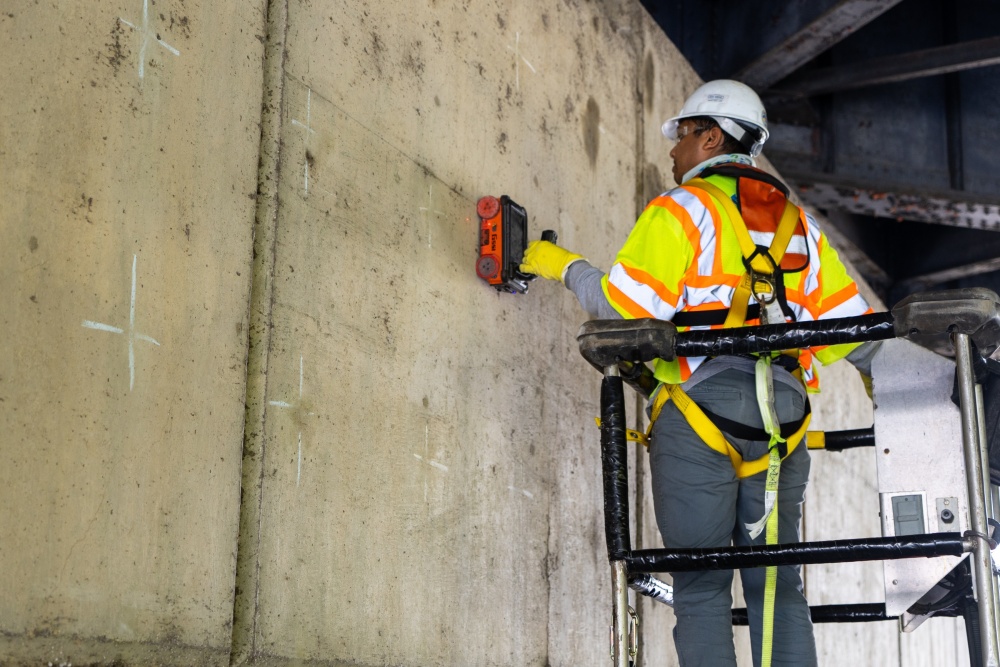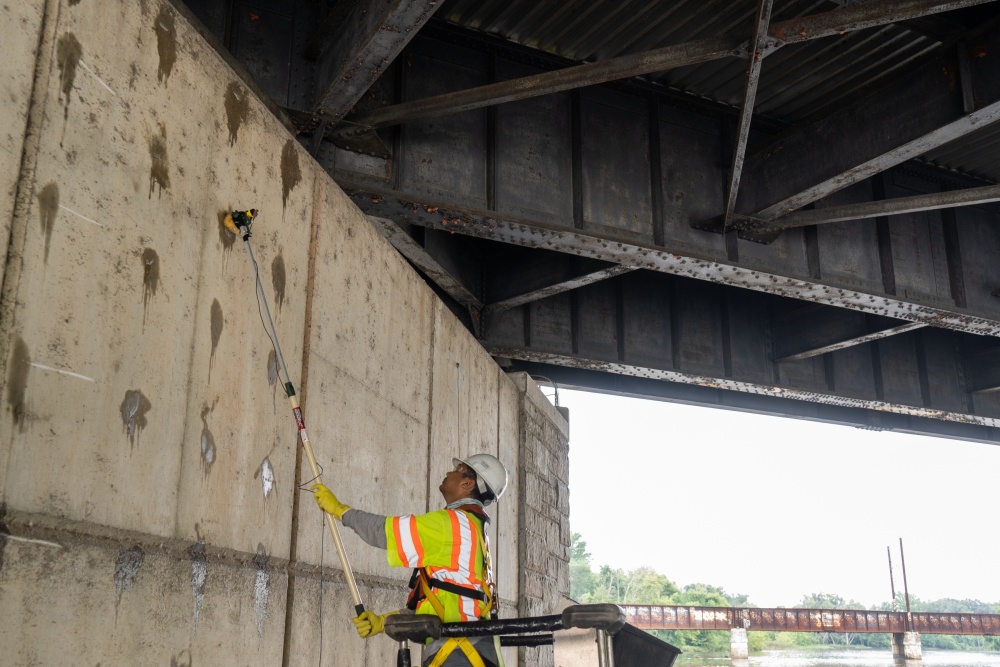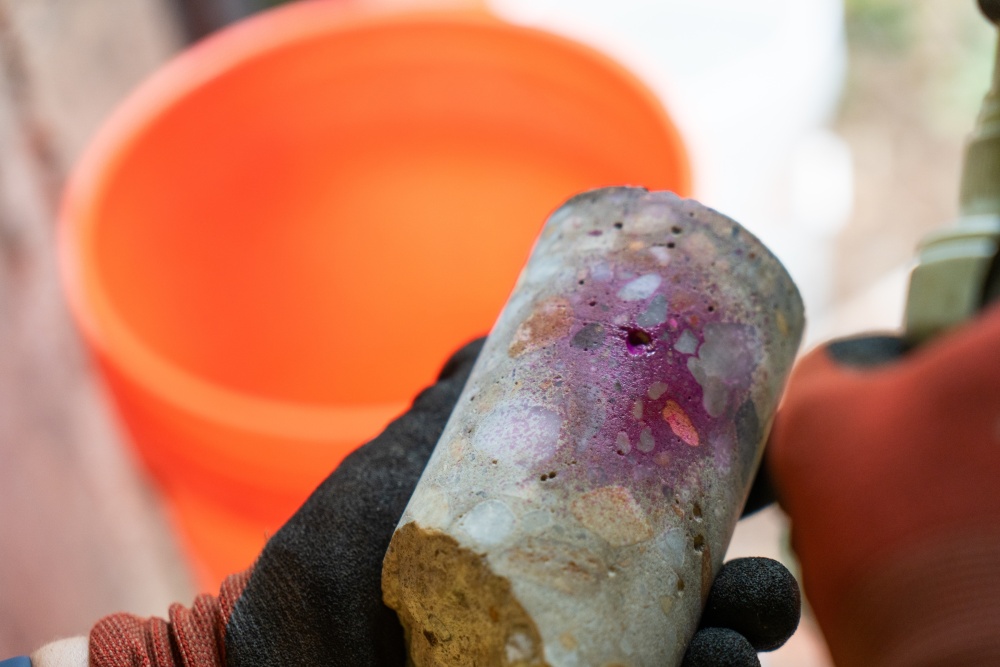Extending the Service Life of the New York Avenue Bridge by 75+ Years | District of Columbia, USA

Services Applied by VCS Engineering
Background & History
Running southwest along the border of Washington and Maryland, the New York Avenue Bridge over the Anacostia River was built in 1953, as a part of the Baltimore–Washington Parkway project. This four-span bridge stretches 450 [four hundred and fifty] feet in length and carries six lanes of traffic over the Anacostia River. Originally the bridge was constructed utilizing steel girders and reinforced concrete substructure elements. However, a major rehabilitation in 1983 changed the two approach spans to reinforced concrete girders.
Watch our video to see our evaluation techniques in action, ensuring the safety and longevity of critical infrastructure.
Click play now!
Rehabilitation Initiatives
In 2021, the New York Avenue bridge’s deteriorating condition warranted another rehabilitation. As part of the overall rehabilitation process, the District Department of Transportation awarded TYLin the responsibility of investigating and assessing the bridge’s structural condition and developing a rehabilitation plan. TYLin sought out VCS Durability to join the project team to provide evaluation of the bridges’ deterioration using non-destructive evaluation and materials testing. Based on the collected results, VCS would support TYLin in service life modeling and development of an effective and efficient rehabilitation.
Non-Destructive Evaluation Techniques
The VCS team employed several different investigation approaches to perform a complete corrosion and materials evaluation.
Ground Penetrating Radar (GPR)
VCS used ground penetrating radar, also known as “GPR”, which is a quick and reliable non-destructive testing method used to locate steel reinforcement and identify its cover depth in concrete.

Corrosion Potential Survey
Another non-destructive testing method called a corrosion potential survey was also performed. This testing method helps the VCS investigation team identify locations in the structure with a high probability of active corrosion even when there are no external visual indicators.
Concrete Resistivity Testing
Concrete resistivity testing, also known as electrical resistivity testing, is another non-destructive testing method the VCS team used to determine the quality of concrete by measuring how easily an electrical current can flow through it.


Laboratory Testing
Apart from the non-destructive techniques, VCS also extracted concrete core samples to perform chloride concentration and carbonation depth testing, and petrographic analysis.
Chloride Concentration and Carbonation Depth Testing
Concrete chloride concentration core samples were taken at various locations and depths throughout the bridge structure. Carbonation depth tests were completed on each extracted core to determine how deep carbonation has advanced into the concrete.
Petrographic Analysis
Petrographic analysis provides detailed information regarding the type of aggregates and binder composition and identifies if any deterioration processes are occurring in the concrete.
Recommendations & Solutions
Based on the evaluation of the New York Ave bridge, the VCS team recommended several options to the District Department of Transportation for repair for each affected bridge element that can extend the service life of the structure from 15 to well over 75 years.
These options ranged from basic repairs, which only addressed visibly deteriorated concrete to extensive rehabilitation and corrosion prevention methods like the installation of galvanic anodes. VCS also works with the owner to evaluate each option based on cost and service life extension, with the aim to select the best option to meet the owner’s needs.
VCS Durability is a provider of engineering consulting services specializing in the investigation, assessment, and cathodic protection design of reinforced concrete structures. We have offices in the US, Canada, UK, and the Middle East and provide services globally.